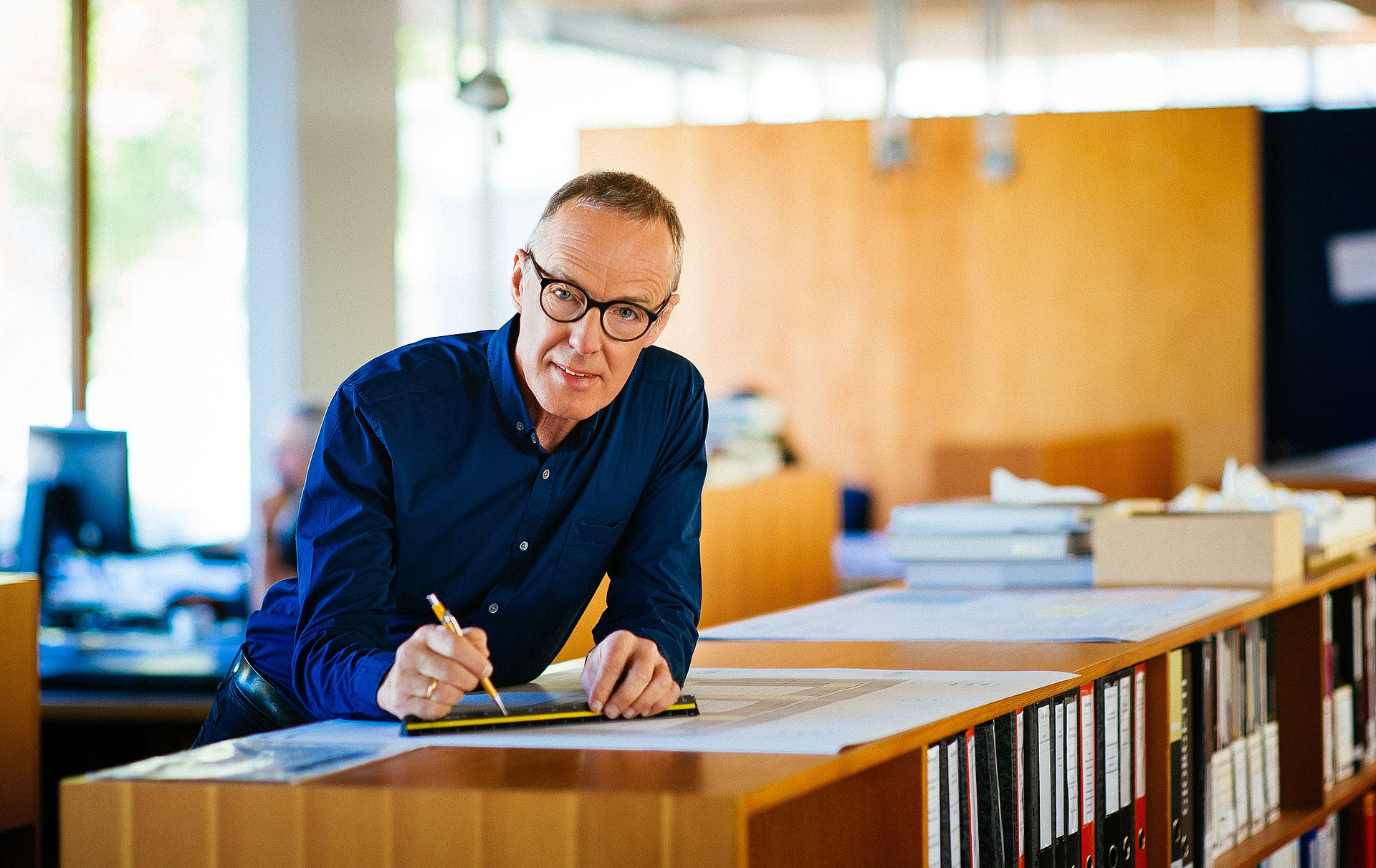Prof. Hermann Kaufmann explains why he sees wood as the building material of the future
"Timber construction helps to address the issue of carbon emissions"

Professor Kaufmann, what is behind this growth in timber construction?
Hermann Kaufmann: In view of climate change, renewable raw materials are becoming more important, and wood is seen as a very promising example. That's because timber construction can help us to address the issue of carbon emissions: Trees capture CO2 from the atmosphere and bind it in the form of carbon in wood. By using that wood in construction, we create space for new forest growth. Building wooden houses can be seen, in a sense, as building a second forest or an extra carbon store in our villages and cities. Wood also replaces fossil fuel-based building materials. And finally, when a timber house reaches the end of its useful life, the material can either be repurposed or used in carbon-neutral energy production.
You were a big believer in wood even before sustainable construction attracted widespread interest. What is it about this material that you find so fascinating?
Wood is a natural material, and therefore has a strong appeal to the senses. It smells good, it's pleasant to touch, and has been familiar to people since time immemorial. Wood epitomizes warmth, comfort and a sense of well-being. Having grown up in a carpenter's family in Bregenzer Wald, the forested region near Lake Constance in Austria, I have always had a special relationship with wood. In the modern era, however, the main construction materials were steel, concrete and glass. People forgot about wood. When I was studying architecture, I realized that I wanted to help revive timber construction – through good architecture.
What does "good architecture" mean in the world of timber construction?
Using a renewable raw material doesn't make an architect exempt from the obligation to produce good designs – and for me that is a priority. Every material shapes the design through its inherent design principles – and good timber architecture follows the design principles of wood. Looking back, I can say that architecturally interesting projects have done more than anything else to draw attention to timber construction. For example, there is the community center that I built around 20 years ago in Ludesch. It contains low-emission materials and has very low energy requirements – and is also a very successful design in architectural terms. The building has attracted many visitors and inspired a few other people to give timber construction a try.
Is a modern timber house different from a traditional one in Bregenzer Wald?
Yes and no. To keep houses warm in the Alps, they used to build them with layered beams – or, as we call them, "knitted" beams. Modern timber houses must meet higher energy standards. As a result, people often use thick, multi-layered insulation. This requires great care during construction and also poses environmental challenges in disposal, recycling and demolition. For those reasons I am currently seeing a revival of old construction principles, inspired by a desire to return to simpler ways of doing things.
Even if there are more and more timber houses, timber construction is not yet mainstream. Are timber houses a luxury for those who can afford it?
Today it is definitely possible to use timber for social housing, too. Standardization is simplifying the construction process more and more. By pre-fabricating components – in other words, by moving most of the construction work into factories – houses can also be built more quickly and at very high quality standards. What's more, construction time is much faster, and takes just one third or even one quarter as long as compared to conventional methods.
But timber buildings are still the exception …
Regrettably, timber construction is still subject to many preconceptions. One of them is that, because wood burns, it poses a safety risk. In response, I can only say: Yes, it's true that wood burns. But the choice of building material has no influence on the number of deaths in a fire. In a burning timber building, firefighters have plenty of warning that the structure is going to fail – which is not always the case with other materials. So wood burns "safely". You also hear people saying that wood doesn't last. But in the Alpine region, where there's plenty of wind and rain, you see 500 and 600-year-old farmhouses.
Do you think that timber construction can gain wide acceptance?
If we want to achieve climate-neutral construction in the future, we will be forced to adopt renewable raw materials. When deciding what to build and how to build it, we should therefore be applying solid, evidence-based information on the performance of materials.
More Information
- The Chair of Timber Construction at the Institute for Architectural Design and Building Technology at TUM remains unique in Europe. By establishing it, the university made a strong commitment to research and development in the field of timber construction.
- Profile of Prof. Hermann Kaufmann
- Prof. Kaufmann is one of seven TUM professors involved in the TUM.wood project, which explores various aspects of wood. The aim of the project is to promote better utilization of wood as a material.
Contact
Prof. Hermann Kaufmann
Technical University of Munich
Chair of Timber Construction
Tel: +49 (89) 289 25 492
kaufmann@tum.de
www.tum.de